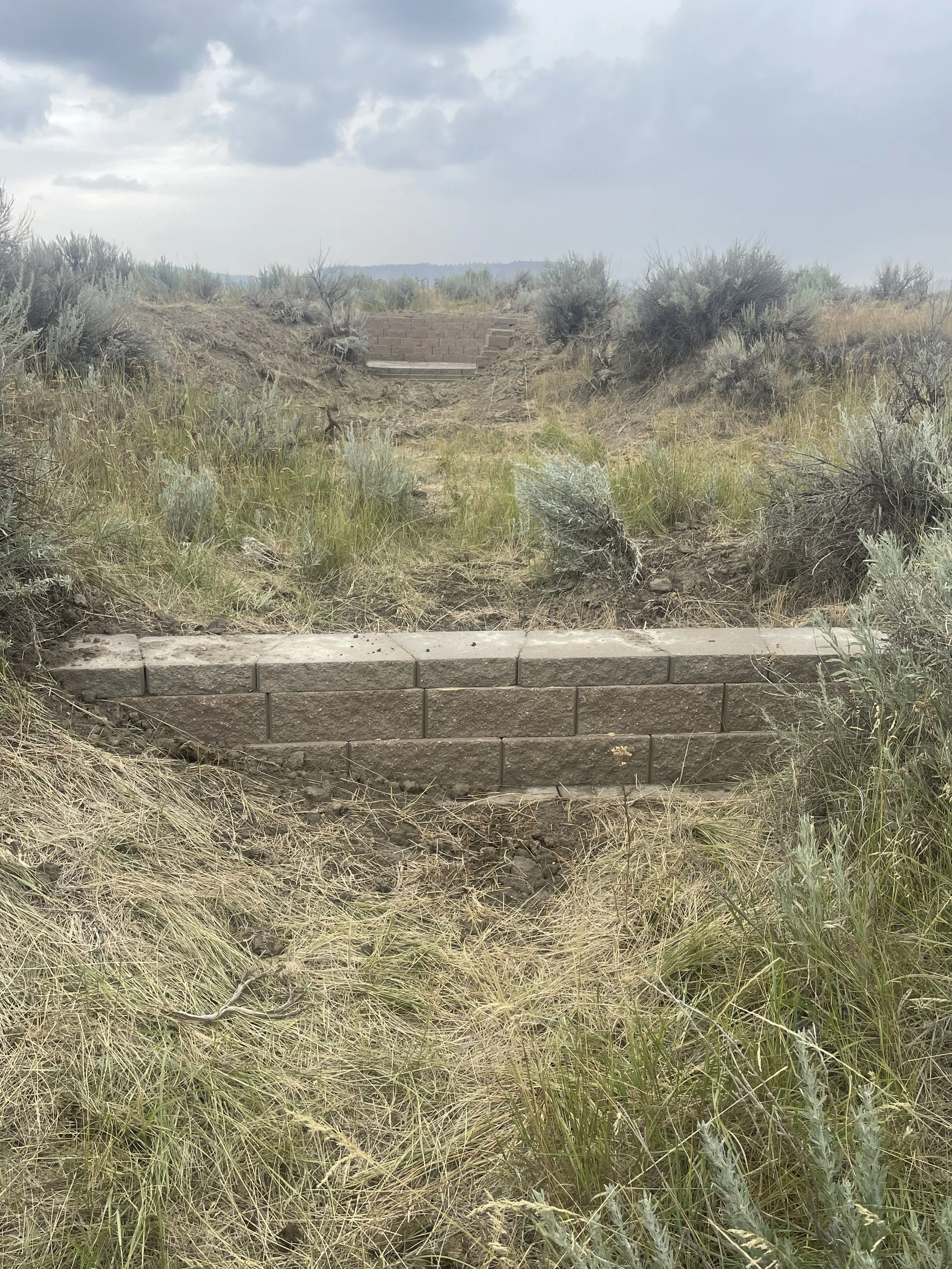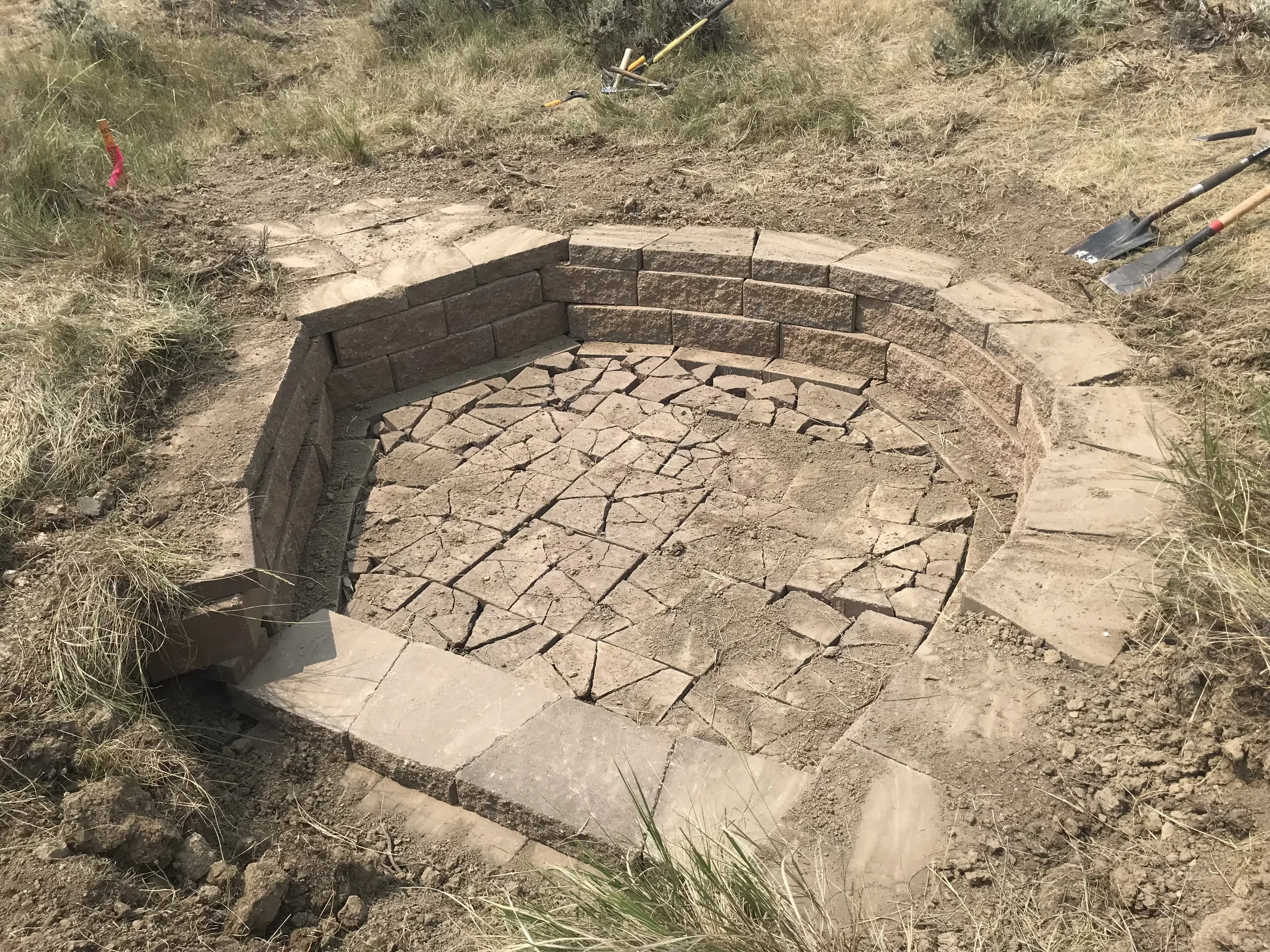
THunder basin zeedyk structures
Thunder Basin Grasslands Prairie Ecosystem Association, Wyoming Game and Fish - Bill, WY
Prior to the development of hard surfaced roads wagon traffic usually moved parallel to the channel bottom, just above the upper limits of the wetland soils associated with the wet meadow. These locations were relatively flat and dry, but also free of woody vegetation such as sagebrush which would have been difficult to drive a wagon through. At points where the valleys narrowed, wagon trails were forced to cross streams. High flows following runoff events were often captured at these crossings, and the streams would flow down the wagon tracks, down-cutting an entrenched channel along the trail, moving the streams out of their historic valley bottom, and draining the wet meadows.
Soil, the upper part of the earth’s “skin” is a living environment. The topsoil layer, typically 4 inches or less in this desert climate, includes billions of microorganisms per cubic foot, plant roots, fungi, worms, and insects. One part of this living tissue grows into living organisms such as plants, mushrooms, and small animals, while other parts help break down dead organic material into components that serve as nutrients for the regeneration of new life. To function well as a spawning bed for life, soil needs sun, air, water, and plant residue. One of the most important factors in the soil’s structure is its capacity to absorb water and hold it in its pores. If we want to bring life back to degraded land, it is critical to help the soil retain more water.
The general purpose of building Zeedyk structures is to protect , stabilize, and restore mesic habitat and wet meadow habitat hydrology so to improve/enhance grassland health, benefit grassland wildlife habitat and ranching operations by increasing water storage in the system. The intention is to arrest headcuts and small channel incisions in historically perennial rangelands using low-tech process-based restoration techniques including; zuni bowls, one-rock dams, wicker-weirs, log-fabric step-falls, rock run down, block wall, plug, and rock mulching.
Watershed Restoration Group has been contracted to build these structures - 129 in total - including machinery site prep and staging of the large volume of material. To date, this has been the largest Zeedyk structure project in the state of Wyoming.








